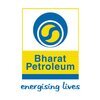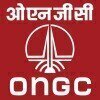Filter interviews by
Indian Oil Corporation Interview Questions and Answers
171 Interview questions
Changing over a pump involves safely switching from one pump to another while ensuring system integrity and efficiency.
Ensure the pump is turned off and isolated from the system before starting the changeover.
Check for any residual pressure in the system and relieve it if necessary.
Disconnect the power supply and any associated piping or hoses carefully.
Install the new pump, ensuring all connections are secure and...
Managing work pressure involves prioritization, effective communication, and stress-relief techniques to maintain productivity.
Prioritize tasks: Use tools like Gantt charts to visualize deadlines and allocate time effectively.
Stay organized: Keep a detailed planner to track daily tasks and responsibilities.
Communicate openly: Discuss workload with supervisors to set realistic expectations.
Take breaks: Short breaks...
Nose pliers are a type of hand tool used for gripping, bending, and cutting materials in metalworking.
Nose pliers have a long, tapered nose for reaching into tight spaces.
They are commonly used in electrical work, jewelry making, and other crafts.
Examples of nose pliers include needle-nose pliers and chain-nose pliers.
A try square is a woodworking tool used for marking and measuring right angles.
Consists of a metal blade and a wooden or plastic handle
Used to check the accuracy of right angles in woodworking projects
Commonly used in carpentry and joinery
Example: Stanley 46-053 Premium Adjustable Quick Square
A vernier caliper is a precision measuring tool used to measure dimensions with high accuracy.
Consists of a main scale and a sliding vernier scale for precise measurements
Can measure internal, external, depth, and step dimensions
Commonly used in engineering, machining, and carpentry
Example: Measuring the diameter of a bolt with a vernier caliper
Tools commonly used in hazardous areas like oil and gas include intrinsically safe tools, explosion-proof tools, and non-sparking tools.
Intrinsically safe tools are designed to prevent the release of electrical energy that could ignite flammable gases or vapors.
Explosion-proof tools are constructed to contain any potential sparks or heat generated during use.
Non-sparking tools are made from materials that do not c...
A set of mm Allen keys is a collection of various sizes of Allen keys used for tightening or loosening screws and bolts with hexagonal sockets.
Common sizes in a set of mm Allen keys include 1.5mm, 2mm, 2.5mm, 3mm, 4mm, 5mm, 6mm, 8mm, and 10mm.
These tools are commonly used in mechanical and automotive industries for assembly and maintenance tasks.
The mm measurement refers to the diameter of the hexagonal socket tha...
The first law of gas laws is Boyle's Law, which states that the pressure of a gas is inversely proportional to its volume at a constant temperature.
Boyle's Law states that P1V1 = P2V2, where P represents pressure and V represents volume.
This law is based on the principle that as the volume of a gas decreases, the pressure increases, and vice versa.
Boyle's Law is commonly used in scuba diving to understand how chan...
G-codes and M-codes are programming languages used in CNC machines to control various functions and operations.
G-codes are used to command specific movements and functions, such as cutting speed and tool positioning
M-codes are used to activate auxiliary functions like coolant systems or tool changes
Examples of G-codes include G00 for rapid movement and G01 for linear interpolation
Examples of M-codes include M06 fo...
McKinsey's 7S model is a management tool that identifies seven key elements to ensure organizational effectiveness.
Strategy: The plan devised to maintain and build competitive advantage, such as market positioning or growth strategy.
Structure: The organizational design and reporting relationships within the company.
Systems: The processes and procedures that govern how work is done, including information systems an...
Indian Oil Corporation Interview Experiences
218 interviews found
I applied via Recruitment Consulltant and was interviewed in Dec 2024. There were 2 interview rounds.
(2 Questions)
- Q1. What is your weekness
- Ans.
One of my weaknesses is that I tend to be overly critical of my own work.
I have a tendency to be a perfectionist and can spend too much time on a task trying to make it perfect.
I am working on improving my ability to delegate tasks and trust others to complete them.
I have learned to recognize when my self-criticism is hindering my progress and take steps to overcome it.
- Q2. What is your strength
- Ans.
My greatest strength is my ability to effectively negotiate contracts and ensure mutually beneficial agreements.
Strong negotiation skills
Attention to detail
Ability to communicate effectively
Experience in contract management
Track record of successful contract outcomes
(3 Questions)
- Q1. Why should I hire you
- Ans.
I have a strong background in customer service and problem-solving skills, making me a valuable asset to the Seller Support team.
I have previous experience in customer service roles, where I successfully resolved customer issues and provided support.
I am highly organized and detail-oriented, ensuring that all tasks are completed accurately and efficiently.
I have excellent communication skills, both written and verbal, ...
- Q2. What is your salary expectation
- Ans.
My salary expectation is based on my experience, qualifications, and the market rate for the position.
Research the average salary range for Contract Executives in the industry and location
Consider your own experience, qualifications, and skills when determining your salary expectation
Be prepared to negotiate based on the benefits and opportunities offered by the employer
- Q3. Can you work under pressure?
- Ans.
Yes, I thrive in high-pressure situations and have a proven track record of delivering results under tight deadlines.
I have experience working in fast-paced environments where quick decision-making and problem-solving skills are essential.
I am able to prioritize tasks effectively and remain calm and focused under pressure.
For example, in my previous role as a Contract Executive, I successfully managed multiple projects...
Interview Preparation Tips
I applied via Campus Placement and was interviewed in Sep 2024. There were 3 interview rounds.
Good thinking about it was just thinking of you guys are doing well done💯 with our relationship between us and our house🏠 is it possible for me to be on your face time⌚
Myself I don't know what you think about how much we can help with your friends with me for more than just don't know what you think about how much you want to see
(2 Questions)
- Q1. Good thinking about how to make sure you have been trying my best friend
- Q2. Good thinking about how much they were you can get a new job at me and you have been trying my best friend
Interview Preparation Tips
- RTL Coding
I applied via Campus Placement and was interviewed in Aug 2024. There was 1 interview round.
(7 Questions)
- Q1. What is the unit of Energy
- Ans.
The unit of Energy is Joule (J)
The unit of Energy is Joule (J)
Energy can also be measured in kilowatt-hours (kWh)
1 Joule is equal to 1 watt-second
- Q2. What is unit of resistance
- Ans.
The unit of resistance is Ohm (Ω).
The unit of resistance is represented by the symbol Ω (Ohm).
Resistance is measured in Ohms, named after the German physicist Georg Simon Ohm.
One Ohm is equal to one volt per ampere (1 Ω = 1 V/A).
- Q3. What is unit of current
- Ans.
The unit of current is Ampere (A)
The unit of current is Ampere (A)
Current is the flow of electric charge in a circuit
1 Ampere is equivalent to 1 Coulomb per second
Current is measured using an ammeter
- Q4. What is the unit of capacitance
- Ans.
The unit of capacitance is Farad (F)
The unit of capacitance is named after Michael Faraday
1 Farad is equal to 1 Coulomb per Volt
Common multiples of Farad include microfarad (uF) and picofarad (pF)
- Q5. What is the unit of power
- Ans.
The unit of power is the watt (W)
The unit of power is the watt (W)
Power is the rate at which work is done or energy is transferred
1 watt is equal to 1 joule per second
Common examples of power units include kilowatts (kW) and horsepower (hp)
- Q6. What is the unit of power?
- Ans.
The unit of power is the watt (W).
The unit of power is the watt (W)
Power is the rate at which work is done or energy is transferred
1 watt is equal to 1 joule per second
Common examples of power units include kilowatts (kW) and horsepower (hp)
- Q7. What is the unit current?
- Ans.
The unit of current is Ampere (A), which measures the rate of flow of electric charge.
The unit of current is Ampere (A)
Current is the rate of flow of electric charge
Commonly represented by the symbol 'I'
1 Ampere is equivalent to 1 Coulomb per second
Interview Preparation Tips
- Electrical and electronics engin
(2 Questions)
- Q1. Easy HR questions like differentiate between Job evaluation and Job analysis
- Q2. Describe McKinsey's 7S model
- Ans.
McKinsey's 7S model is a management tool that identifies seven key elements to ensure organizational effectiveness.
Strategy: The plan devised to maintain and build competitive advantage, such as market positioning or growth strategy.
Structure: The organizational design and reporting relationships within the company.
Systems: The processes and procedures that govern how work is done, including information systems and per...
A topic was allotted and normal GD was conducted. This was followed by a GT where a set of statements were given and the group had to come to a consensus regarding the order of importance
Interview Preparation Tips
I applied via Walk-in and was interviewed in Nov 2024. There were 2 interview rounds.
GK/GS
Technical
Maths
General English
(2 Questions)
- Q1. Disttilation column
- Q2. Process operation
Interview Preparation Tips
- Process Engineering
- Q1. Technical questions related to electrical engineering
- Q2. Non-technical questions including group discussion. Either whole group qualifies or get disqualified based on the performance
I appeared for an interview in Apr 2025, where I was asked the following questions.
- Q1. Speak About yourself
- Q2. Your Future Goals
General aptitude questions , pnc, probability , time work etc
(2 Questions)
- Q1. Heat Transfer theorems
- Ans.
Heat transfer theorems are principles that govern the transfer of heat from one object to another.
Fourier's Law of Heat Conduction states that the rate of heat transfer through a material is proportional to the negative gradient of the temperature and the area normal to that gradient.
Newton's Law of Cooling describes the rate of heat loss from a body to its surroundings due to convection.
Stefan-Boltzmann Law states tha...
- Q2. Mass Transfer models
Interview Preparation Tips
I appeared for an interview in Nov 2024.
(5 Questions)
- Q1. Work experience which total
- Ans.
I have a total of 10 years of work experience in various roles and industries.
Worked for 5 years in marketing at XYZ Company
Spent 3 years in project management at ABC Company
2 years of experience in sales at DEF Company
- Q2. Skills about company
- Q3. Family background
- Q4. Way joint the company
- Q5. Featured of the company
I appeared for an interview in Mar 2025, where I was asked the following questions.
- Q1. Where are you from?
- Ans.
I hail from a vibrant city known for its rich culture, diverse community, and beautiful landscapes, which shaped my perspective.
I grew up in a city that celebrates various festivals, like Diwali and Christmas, showcasing its cultural diversity.
The local cuisine is a blend of flavors, with street food being a favorite among residents and visitors alike.
Nature is close to my heart; I often spent weekends hiking in the ne...
- Q2. Which year your education is completed
- Q3. What's your skill?
- Ans.
I possess strong analytical skills, enabling me to solve complex problems and make data-driven decisions effectively.
Proficient in data analysis tools like Excel and Python, which I used to streamline reporting processes in my previous role.
Experience in conducting market research to identify trends, leading to a 15% increase in sales for a product line.
Skilled in critical thinking, allowing me to assess situations qui...
Top trending discussions






Indian Oil Corporation Interview FAQs
The duration of Indian Oil Corporation interview process can vary, but typically it takes about less than 2 weeks to complete.
Tell us how to improve this page.
Indian Oil Corporation Interviews By Designations
- Indian Oil Corporation Technician Apprentice Interview Questions
- Indian Oil Corporation Officer Interview Questions
- Indian Oil Corporation Safety Officer Interview Questions
- Indian Oil Corporation Intern Interview Questions
- Indian Oil Corporation Technician Apprentice Trainee Interview Questions
- Indian Oil Corporation Apprentice Trainee Interview Questions
- Indian Oil Corporation Apprenticeship Trainee Interview Questions
- Indian Oil Corporation Production Engineer Interview Questions
- Show more
Interview Questions for Popular Designations
- Technician Apprentice Interview Questions
- Officer Interview Questions
- Intern Interview Questions
- Apprenticeship Trainee Interview Questions
- Safety Officer Interview Questions
- Technician Apprentice Trainee Interview Questions
- Apprentice Trainee Interview Questions
- Senior Associate Interview Questions
- Show more
Overall Interview Experience Rating
based on 234 interview experiences
Difficulty level
Duration
Interview Questions from Similar Companies
Indian Oil Corporation Reviews and Ratings
based on 3.2k reviews
Rating in categories
|
Assistant Manager
233
salaries
| ₹14 L/yr - ₹33 L/yr |
|
Manager
144
salaries
| ₹1 L/yr - ₹6.7 L/yr |
|
Apprentice Trainee
135
salaries
| ₹0.9 L/yr - ₹5 L/yr |
|
Computer Operator
123
salaries
| ₹0.7 L/yr - ₹4.3 L/yr |
|
Project Assistant
112
salaries
| ₹2.4 L/yr - ₹4.8 L/yr |

GAIL

Reliance Industries

Shell

Bharat Petroleum
- Home >
- Interviews >
- Indian Oil Corporation Interview Questions














